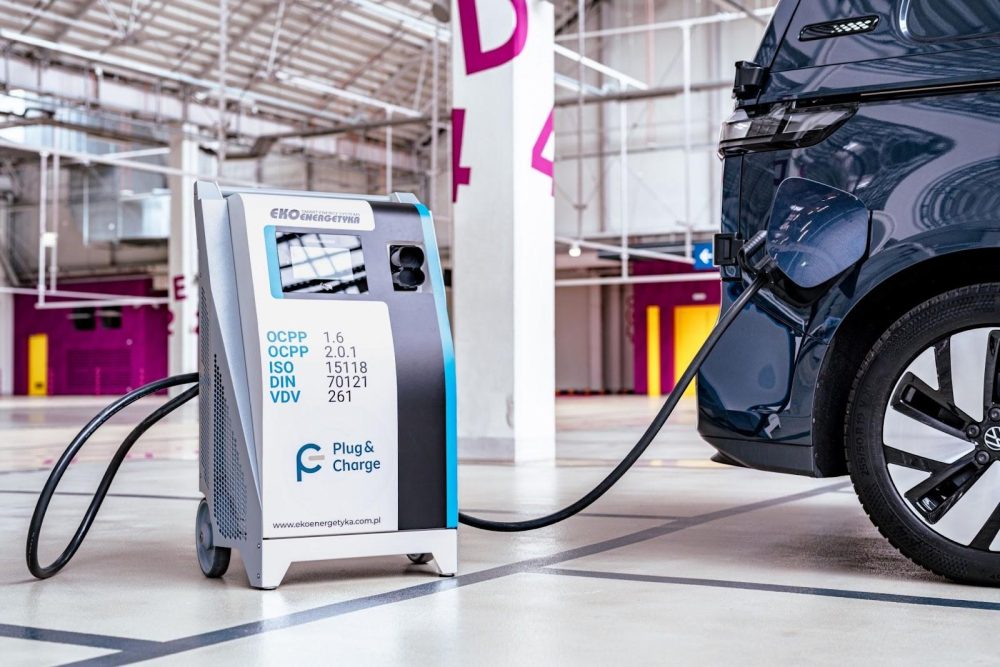As electric vehicles (EVs) gain popularity across Europe, the need for efficient and user-friendly charging solutions has never been more pressing. While the continent leads in EV adoption, with countries like Norway and the Netherlands at the forefront, the charging experience often lags behind.
Enter Plug & Charge is a new, revolutionary technology with automated communication and billing processes that promises to transform and simplify how Europeans charge their electric cars.
What is the Plug & Charge Technology?
Plug & Charge, enabled by the ISO 15118 international standard, is the simplest and most secure way for drivers to charge their electric vehicles. This technology eliminates the need for cards, mobile apps, or RFID cards that are currently common across European charging networks. Instead, all an EV owner needs to do is plug the charging cable into the vehicle, and charging begins automatically – no additional steps are required.
It’s a significant leap forward from the current landscape of European EV charging, where drivers often juggle multiple accounts, apps, and authentication methods depending on the charging network they're using.
How Plug & Charge Works
The magic of Plug & Charge lies in its sophisticated yet invisible-to-the-user technology. Here's a breakdown of how it functions:
- Vehicle-to-Charge Point Communication: When an EV is plugged into a compatible charging station, it immediately establishes a secure communication channel.
- Authentication Process: The vehicle and charging station exchange encrypted identification information. This process uses digital signatures and public key infrastructure, ensuring a high level of security.
- Billing and Payment Handling: Once authenticated, the charging session begins. The energy consumed is measured and billed automatically to the account associated with the vehicle.
Security is paramount in this process, especially considering Europe's strict data protection regulations. Plug & Charge employs several measures to ensure the integrity of each transaction:
- Encryption and Decryption: All data exchanged between the vehicle and the charging station is encrypted, protecting sensitive information from interception.
- Two-Way Authentication: Both the vehicle and the charging station must prove their identity to each other, preventing unauthorized access or fraudulent charging attempts.
- Digital Signatures: These provide an additional layer of security, ensuring that the data hasn't been tampered with during transmission.
Benefits for European EV Owners
For EV drivers across Europe, Plug & Charge represents a significant leap forward in charging convenience and security, addressing many of the pain points that early EV adopters have faced.
- Simplified Charging Experience: Gone are the days of fumbling with apps or cards at charging stations of different service providers. Whether you're in Oslo, Munich, or Barcelona, the process is the same: plug in and charge.
- Enhanced Security: With encryption built into every transaction, European EV owners can trust that their data is protected, adhering to the continent's high standards for data privacy.
- Consistency Across Networks: As Plug & Charge becomes more widely adopted, drivers will enjoy a uniform experience across different charging networks throughout Europe. This is particularly beneficial for those traveling between EU countries.
- Future-Proofing: Plug & Charge is designed to work with upcoming wireless charging technology, ensuring that European EV owners are ready for the next evolution in charging infrastructure.
Implementation in the European Market and the charging infrastructure
As Europe leads the global transition to electric mobility, Plug & Charge is becoming a key enabler for a seamless, user-friendly charging ecosystem that spans the entire continent:
- Automaker Adoption: European manufacturers like Porsche, Audi, and Mercedes-Benz have been at the forefront of implementing Plug & Charge in their newer EV models. Volkswagen Group, including brands like Skoda and Cupra, have also embraced this autocharge technology.
- Charging Network Compatibility: Major European charging networks, including IONITY (a joint venture between several European automakers), are rolling out Plug & Charge capabilities across their stations.
Challenges and Considerations
Despite its promise, the rollout of Plug & Charge in Europe faces several challenges. These hurdles reflect the complexity of implementing new technology across a diverse continent with varying levels of EV adoption and vehicle charging infrastructure development:
- Legacy Vehicle Compatibility: Many older EVs on European roads lack built-in Plug & Charge capabilities. Retrofitting solutions or ensuring backward compatibility will be crucial for widespread adoption.
- Infrastructure Upgrades: Existing charging stations across Europe will need upgrades to support Plug & Charge, which requires significant investment from operators.
- Standardization Efforts: While ISO 15118 provides a framework, ensuring consistent implementation across different manufacturers and charging networks in the diverse European market remains a challenge.
- Consumer Awareness: Many European EV owners are unfamiliar with Plug & Charge. Education campaigns will be necessary to highlight its benefits and encourage adoption.
Conclusion
Plug & Charge represents a significant leap forward in EV charging technology, offering a seamless, secure, and user-friendly experience that aligns well with Europe's advanced data protection standards and ambitious climate goals. As the technology becomes more widespread, it has the potential to accelerate EV adoption across the continent, overcoming current barriers related to charging complexity and convenience.
Notably, Ekoenergetyka demonstrated its readiness for Plug & Charge technology in 2023 during the New Mobility Congress, where tests were conducted. Our implementation of Plug & Charge simplifies the charging process, allowing users to simply plug in their vehicles without the need for additional apps, RFID cards, or payment methods.
For European EV owners, charge point operators, and policymakers alike, Plug & Charge offers a glimpse into the future of electric mobility – one where charging an EV is as simple and routine as refueling a conventional vehicle. As Europe continues to lead the global transition to electric vehicles, technologies like Plug & Charge will play a crucial role in shaping a more sustainable and user-friendly transportation landscape.
If you're eager to learn more specifics of EV charging or have any questions about which connectors and chargers are best for your needs, don’t hesitate to reach out to our experts at Ekoenergetyka.
